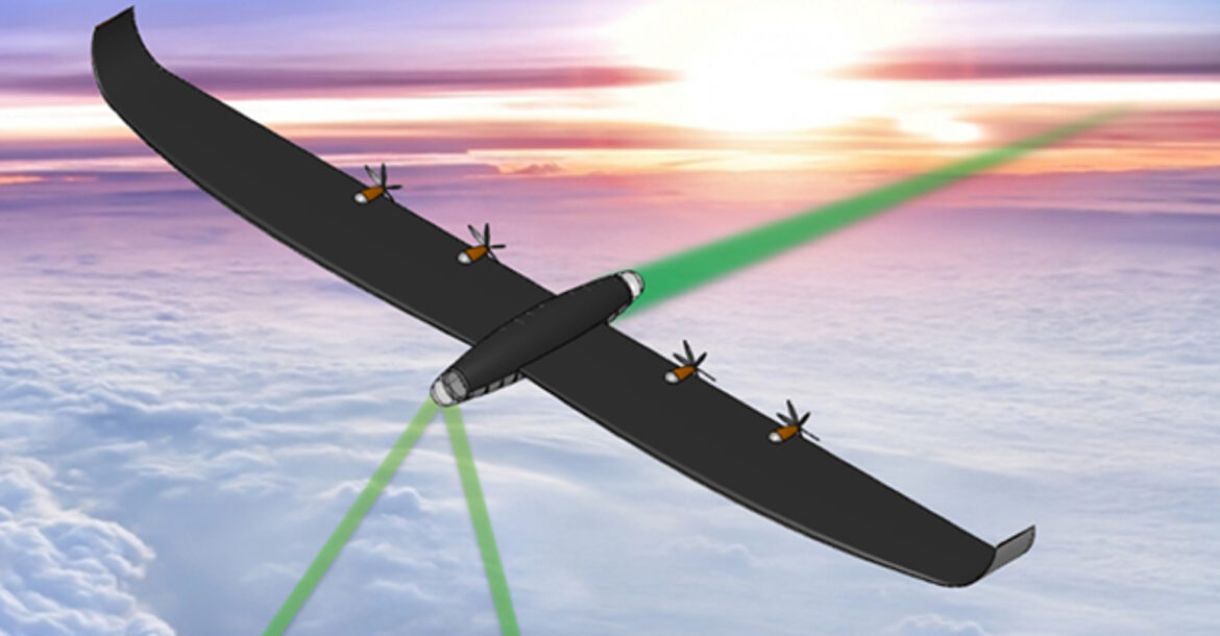Russia claims to have patented a technology that can recharge other airborne unmanned aerial vehicles (UAV) wirelessly using principles of ‘inductive charging.’ This is another addition to the trend of Russia introducing supporting uncrewed aerial systems to supplement the operations of other remotely controlled aircraft in the ongoing war.
According to TASS, the patent document suggests a family of various UAVs for different purposes (reconnaissance, surveillance, attack, and loitering munitions), supported by “tanker” UAVs that transfer electrical power. This eliminates the need for the said drone to be recharged at the operator’s station and increases its flight time.
This affords the Russian units a host of tactical benefits and flexibility, making up for the ‘operational blindspots’ that an adversary can exploit when the UAVs are absent from the sky. However, the technology suggests a certain degree of technological complexity and slight logistical complication, given the tactical and procedural harmonization required across Russian units.
Russian ground forces are using a host of drones for different purposes made by various suppliers, including commercial leisure drone makers, Russian state-owned defense companies, and UAVs made as part of self and crowd-funded efforts by private Russian technology companies, individual drone hobbyists, engineers, and academia.
Tanker Drones That Recharge UAVs Mid-Air
The TASS report said that the patent was filed by the St. Petersburg State University of Transport of Emperor Alexander I, which comprises “a system of combat UAVs.” “(These) UAVs can recharge in flight to protect territories and destroy air and ground targets,” the patent’s description says.

It suggests that the invention is not a single “tanker UAV” but a whole family of remotely controlled aircraft with the devices to receive electrical power wirelessly. Existing combat drone systems have the “disadvantage” of “limited operating time,” says the patent document.
“The invention relates to systems of combat unmanned aerial vehicles designed to protect airspace and territories and destroy air and ground targets. The present invention increases the operating time of a combat unmanned aerial vehicle system by using an ‘induction wireless’ method of transmitting electrical energy,” says the document’s abstract.
The new system of combat drones otherwise has all the attributes of unmanned aerial systems in terms of basic design, types, and fundamental engineering principles. “Multicopters, quadcopters, or tilt rotors” are a part of this family. The drones’ bodies have “motors connected to fixed power supplies, and propellers are located on the shafts of these motors.”
“Each unmanned aerial vehicle is equipped with a small-sized optical-electronic platform, a search and targeting radar station, a reconnaissance and navigation unit, a multi-channel data transmission line device, and a friend or foe.” This seems to be an Identification Friend or Foe (IFF) interrogation system. “Weapons are also attached to the body, and electrical windings connected to power sources are attached to the propeller blades.”
How The System Works
But what differentiates the “combat UAVs” is that “they are designed to interact with unmanned aerial vehicles (tankers).” These tankers have a “rigidly fixed…magnetic field source…in the lower part of the bodies. “(The) permanent magnet or is used as a magnetic field source. An electric coil with a winding connected to a power source,” adds the patent document.
But when the “combat UAVs…discharge their power supply to a level that does not ensure the normal functioning, a signal is sent to the ground control point, and a combat tanker drone is sent to the UAV location.”
The tanker “flies” and “hovers above” the combat UAV, charging the drone’s power supply. “Charging the UAV’s power source by induction without interrupting its flight allows an unlimited increase in the operating time of the combat drone system,” the abstract says.
Lot Of Capabilities Unclear
However, there are many unknown details about the system, beginning with whether the drones (both the combat UAVs and the tankers) are fully human-controlled, semi-autonomous, or autonomous. The report’s description strongly indicates autonomous or at least semi-autonomous operation. This conclusion is purely based on the wording in the patent documentation and, however, could not be independently verified.
“After the drones arrive in the combat duty zone, they freeze in their positions. When freezing, with the help of an optical-electronic platform, there is round-the-clock monitoring of the terrain, detection, and further observation of targets. The receiver-transmitter ‘friend or foe’ leads to target recognition. If the correct response signal is not received, the means of destruction are initiated,” the TASS report said.
Also, if the tanker UAV can perform some of the tasks of the combat UAVs or if the latter can be charged through physical, electrical devices in case the tanker drones get shot down, it allows greater redundancy. It is also unclear if the UAV used for recharging can also deliver such power to other drones used by the Russian military outside this dedicated family of drones.
Russian Tradition Of ‘UAVs To Support UAVS’
Nevertheless, this is not the first time Russia has introduced unconventional combat support UAVs designed to ease the operations of other drones directly involved in the fighting. Eurasian Times reported about the Russian industry developing the Lodyr drone system that prevents enemy electronic warfare (EW) from tracking drone crews, particularly those flying first-person view (FPV) UAVs.
Russia also employs “repeater drones” that relay, maintain, and intensify the radio link between the ground controller and the airborne UAVs, increasing their range. Reports show these drones are just off-the-shelf systems from firms like Chinese UAV majors like DJI, strapped with repeater devices and directional antennas.
- The author can be reached at satamp@gmail.com
- Follow EurAsian Times on Google News